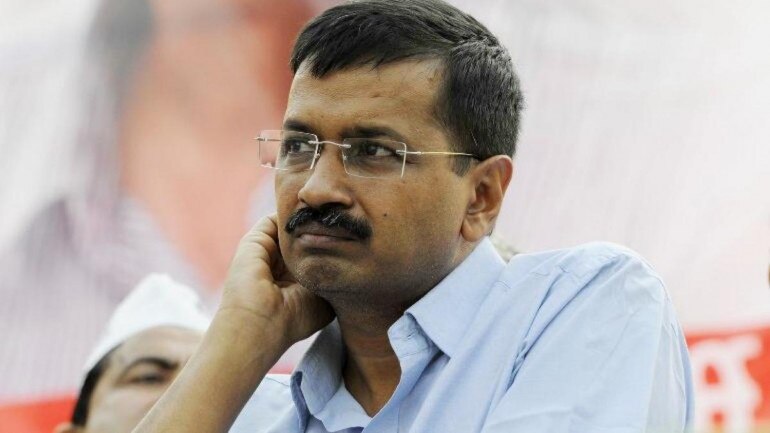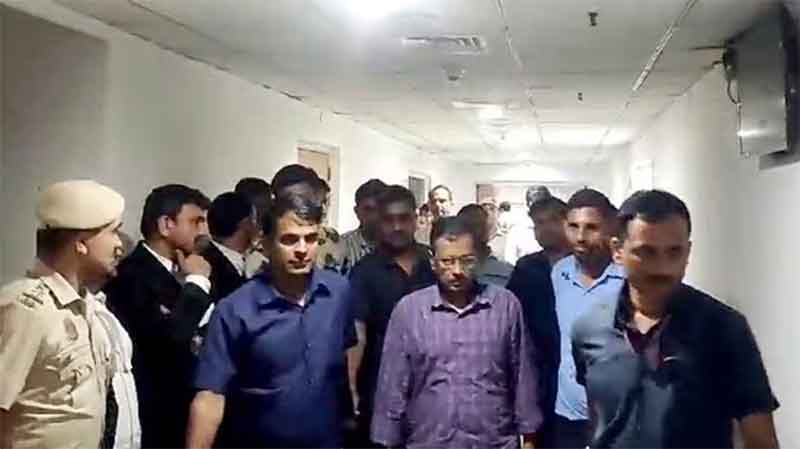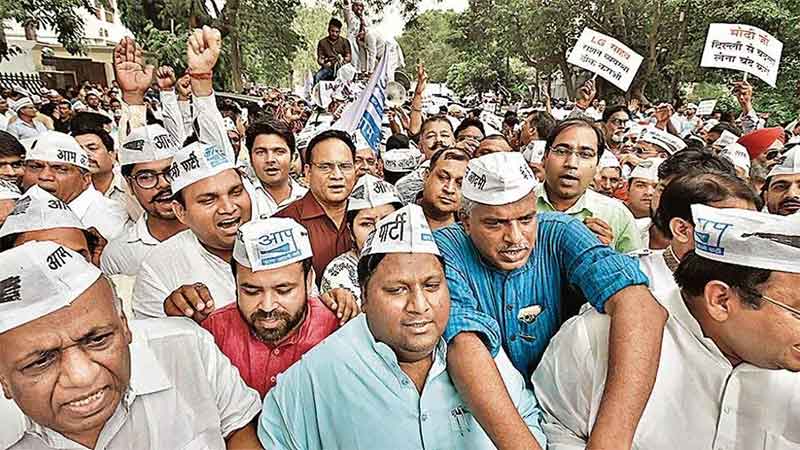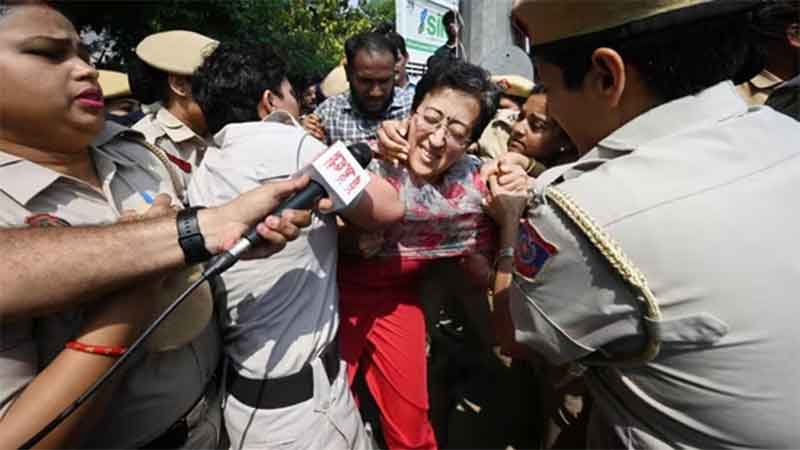
There is nothing surprising about recent suggestion of Delhi Chief Minister Arvind Kejriwal regarding photographs of Hindu deities on Indian currency notes. This “suggestion” has come just ahead of assembly elections in Gujarat and Himachal Pradesh. It has certainly succeeded in gaining substantial media coverage and political attention. Usage of this electoral-card –laced with religious appeal to apparently win Hindu votes- cannot but be viewed as nothing but a political strategy which Kejriwal has never really abandoned. This move has certainly prompted certain critics and his old political rivals to describe him as another type of “BJP” (Bharatiya Janata Party) – political wing of saffron brigade-the extremist right winged party.
It may be recalled, Kejriwal’s entry into politics was based to a substantial degree on the support he received from Sangh Parivar, which he chose not to openly acknowledge. Prior to Kejriwal launching his own party, he received attention as a key member of Anna Hazare’s team, who hit headlines when he fasted for 12 days, from August 16, 2011 at Delhi’s Ramlila Maidan. Congress was then in power at the Centre and in Delhi. Saffron brigade and groups associated with them were taking care of cooking and providing food and drinks to people visiting Ramlila Maidan. Free supply of eatables prompted a percentage of visitors to enjoy themselves as a kind of picnic. While support of saffron brigade for Hazare’s fast, also described then as a “revolution” was known as an open secret, BJP maintained a studied silence on this till the drama lasted. Later, they openly revealed that their members were key factions behind Hazare’s movement. The then Vishwa Hindu Parishad (VHP) chief Ashok Singhal openly asserted, “Members of the Dharma Yatra Mahasangh, a wing of VHP, had opened stalls at Ramlila Maidan to offer food to over 20,000 people every day.”
Expressing “shock” at Singhal’s claims, Kejriwal had said, “I’m quite surprised, I’m shocked. It’s wrong, rather mischievous on Singhal’s part to say such thing. He should not indulge in these things.” At the same time, he acknowledged, “Six-Seven organisations set up food stalls. They demanded space (at Delhi’s Ramlila Maidan) and we gave them. I don’t know if one of them belonged to any political groups.”
Irrespective of whether Hazare’s fast is viewed as a political drama with/without support of saffron brigade, there is no denying that it helped in facilitating Kejriwal’s entry onto the political stage. Yes, initially he played role as an “activist” targeting then political bigwigs on corruption-issue. Hazare remained in the forefront for a while. Kejriwal moved out of Hazare’s political-shadow, from where he had begun his political career. Since then there has been no looking back for him, politically marked by Kejriwal launching his party (Aam Aadmi Party) in November 2012 and taking over reins of Delhi government as Chief Minister after winning legislative assembly elections in 2013. Without elaborating on details of his political career, it is imperative to highlight a few points which cannot be ignored.
As suggested earlier, Hazare-movement played a key role in helping Kejriwal gain political prominence. Equally significant is the support provided by saffron brigade to the same. BJP’s key purpose then was to politically cash on Hazare-movement’s success in Delhi as well as in Uttar Pradesh (UP). Mayawati (Bahujan Samaj Party) held command in UP during that period. Kejriwal started playing his political cards electorally by targeting Congress in Delhi Assembly Elections. It is possible, his political moves prior to this- marked by his participating actively in Hazare-movement- were deliberately planned towards this aim, that of targeting Congress party. He may not have enjoyed much success in this direction without support of major rivals of Congress party, particularly the BJP. The possibility of Kejriwal being supported by his political patrons and thus playing the role of a political pawn was apparently not considered seriously then in general. Greater importance was accorded to his populist appeal and his anti-corruption campaign as an activist. At the same time, he was also questioned by his rivals on sources of his funds, whether he was using anti-corruption campaign for “personal/political” gains or as a revolutionary and so forth.
It is equally significant to note that Kejriwal’s political journey began by lashing out at Congress on terrain where it enjoyed strong support. This began with Delhi Assembly and recently moved into Punjab. Prospects of his facing strong (or maybe any notable) opposition from BJP in these areas may be said to be fairly weak. Now, he has chosen to try his luck in Gujarat and in Himachal Pradesh also. Both states are at present headed by BJP governments.
Of course, Kejriwal has political freedom and constitutional freedom to try his and his party’s luck where so ever he desires. However, he also has constitutional obligations and duties as an Indian citizen. Besides, “political ethics” displayed by him – as pointed out- strongly suggest that he has been playing the role of a political pawn, apparently promoted by his patrons to target their key rival- Congress party. Gradual but definite political inclination of Kejriwal to remain least bothered about some of his former colleagues – as activists and in politics – even ignore them may also be viewed as a pointer in this direction. Not one but several colleagues chose to part company with him and continue pursuing their secular agenda, individually and/or by supporting secular parties as and when required. Several questions may be raised on why did they choose to do so?
If their differences were due to their desire for pursuing their secular moves, most probably they must be fairly relieved at not remaining a part of Kejriwal’s team at present. Yes, chances of their supporting Kejriwal’s suggestion of Hindu deities’ photographs on Indian currency notes may be viewed as practically non-existent. In all probability, this suggestion appears to have acted like a panic bomb for those viewed as probably his old patrons. This is marked by criticism showered at him from this camp. Kejriwal has apparently tried using the same strategy – religious stamped with communalism – which has time and again been used to win “Hindu” votes. But at present, BJP cannot ignore prospects of such moves proving more expensive for its own electoral gains than that of Congress. Whether BJP does or not, the hard reality, as being pointed out by his critics, of this having exposed his own “saffron” colours cannot be ignored, though this has been fairly apparent from 2011. This scribe had taken note of this in her writings on Hazare’s fast and Kejriwal’s political moves. His political ambitions may now be viewed as a little too lofty by his old political patrons. It is be watched, whether he retains their support and succeeds electorally or not!
Nilofar Suhrawardy is a senior journalist and writer with specialization in communication studies and nuclear diplomacy. She has come out with several books. These include:– Modi’s Victory, A Lesson for the Congress…? (2019); Arab Spring, Not Just a Mirage! (2019), Image and Substance, Modi’s First Year in Office (2015) and Ayodhya Without the Communal Stamp, In the Name of Indian Secularism (2006).














































